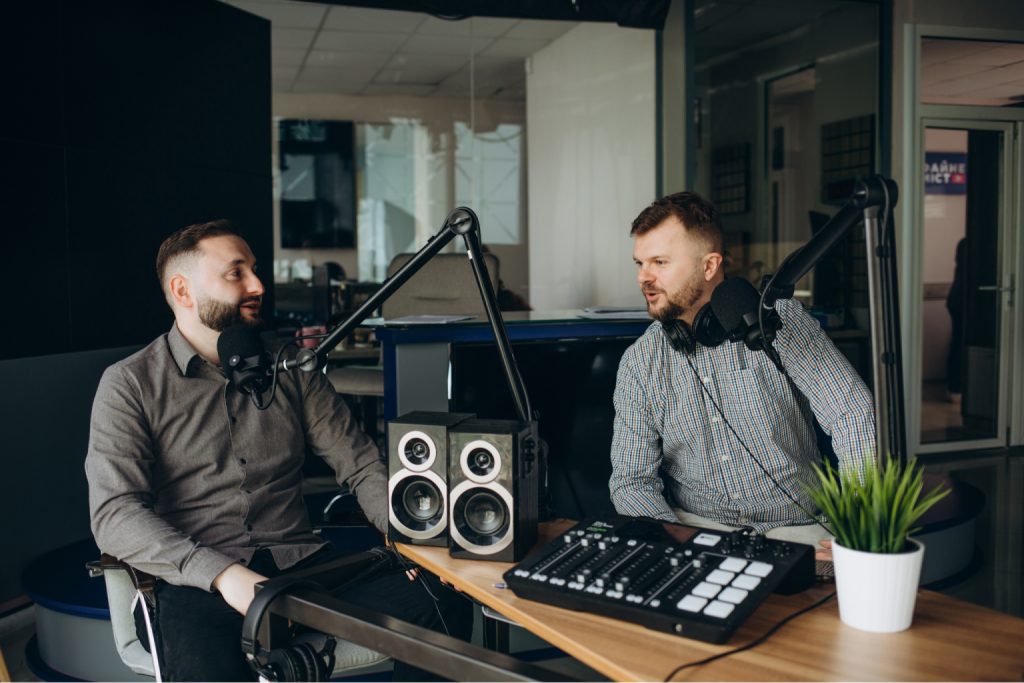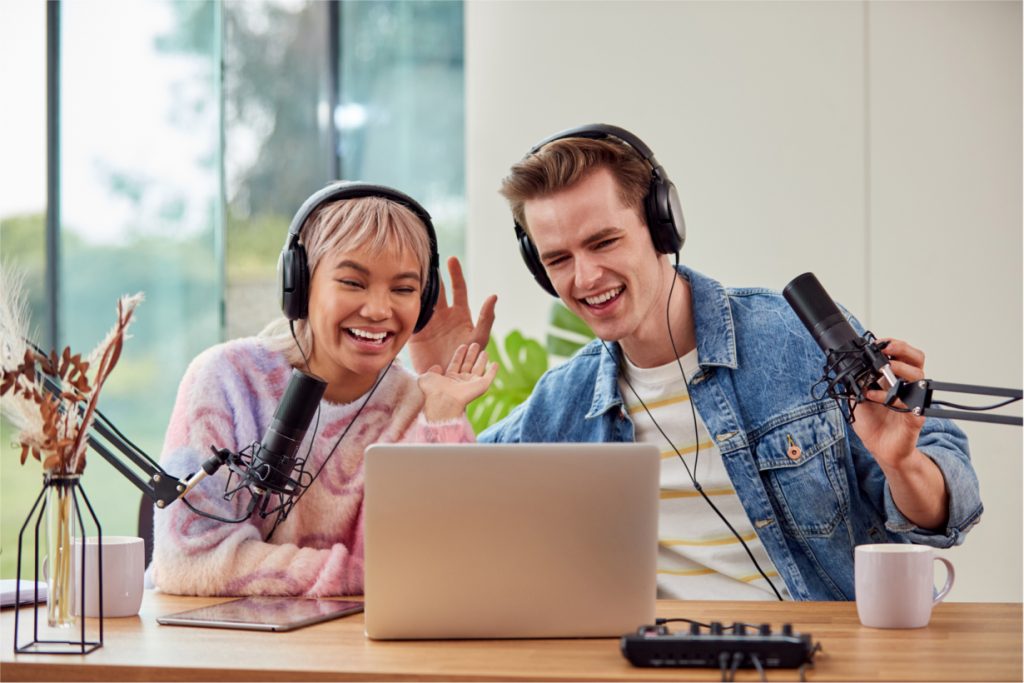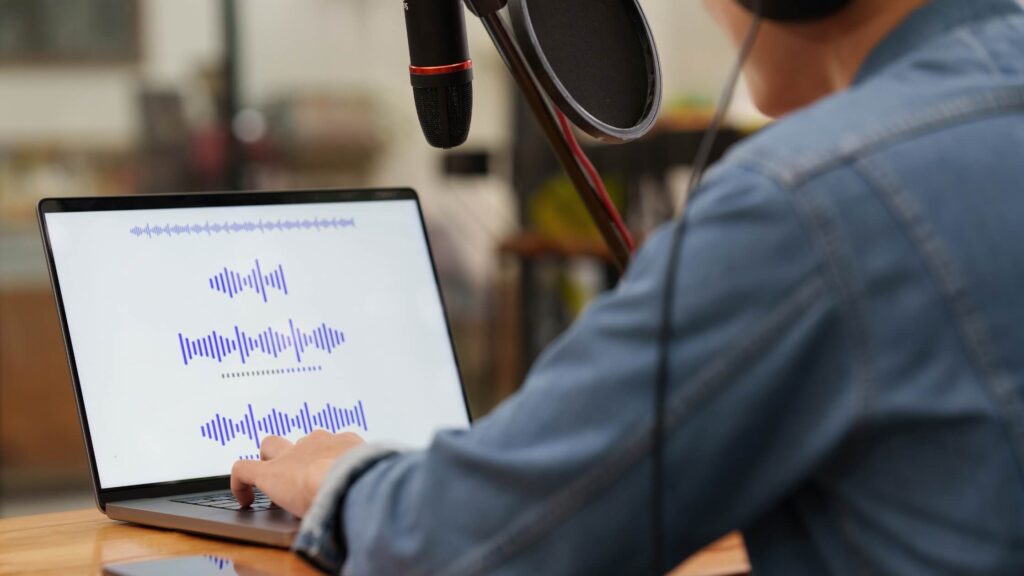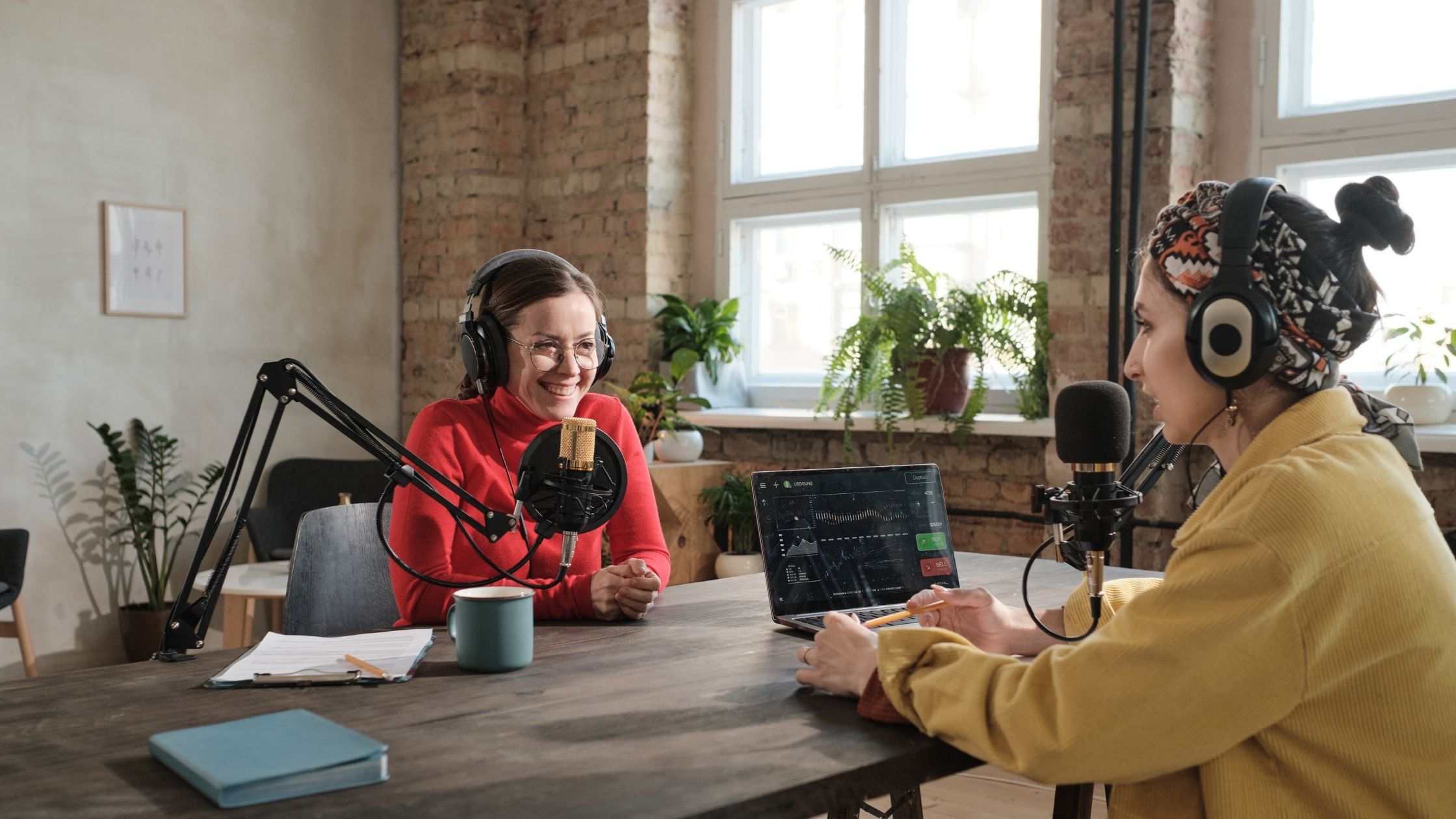Many beginner podcast hosts wonder, "What equipment do I need to start a podcast?" You may have the script and a microphone, but there's a lot more equipment for your podcast setup. This guide covers the best podcast tools for beginners, including the top equipment, strategies, and brands.
How the Right Podcast Equipment Can Make a Difference
Podcasting equipment can improve your episodes by decreasing distractions, balancing audio levels, and making dialogue more coherent. They can also make your job easier, allowing you to stabilize audio and readjust microphones as you record to save time in post-production.
While it's often challenging to determine what exactly is wrong with poor audio, your ears can always tell the difference, and so can your listeners. In short, improving your sound quality with the right equipment is essential to creating a professional and successful podcast.
Podcast Tools for Beginners
For many podcasters, there's no end to the equipment they want to stock up on. That said, when getting you're footing as a host, it can be challenging to gauge what to include in your podcast starter kit — so we've compiled this list for you.
Essential Audio Equipment
Your beginner podcast equipment — think headphones and USB interfaces — should allow you to fluidly manage your audio before and during recordings.
Microphone With Built-In Pop Filter
Microphone pops are unfortunately common among podcasts and radio shows, often sounding like brief, quiet hisses or knocks. These popping sounds are caused by air moving too quickly against the microphone, such as from someone's breath or a windy environment.
Condenser mics with built-in pop filters, screens, and shields reduce popping interference for clearer recording by physically blocking air interference. The filters often look like flat circles attached in front of microphones and are intended to be spoken through directly.
That said, as pop filters are usually available from most high-quality USB microphone brands, filter styles shouldn't influence your purchasing decision over the specs of the microphone itself.
Headphones
No one enjoys the sound of their own voice, but it's an essential part of hosting a podcast. Headphones let you listen to your recordings as you go, which can help you manage the sound's quality, consistency, and levels, including if someone is speaking louder than others. Most importantly, headphones reduce the risks of feedback and echo, which can make your audio unusable.
When selecting a headphone, search for models that have high-quality audio and don't delay sound, such as Sony's MDR-7506 headphones. They should also be comfortable to wear to avoid readjusting them during recording.
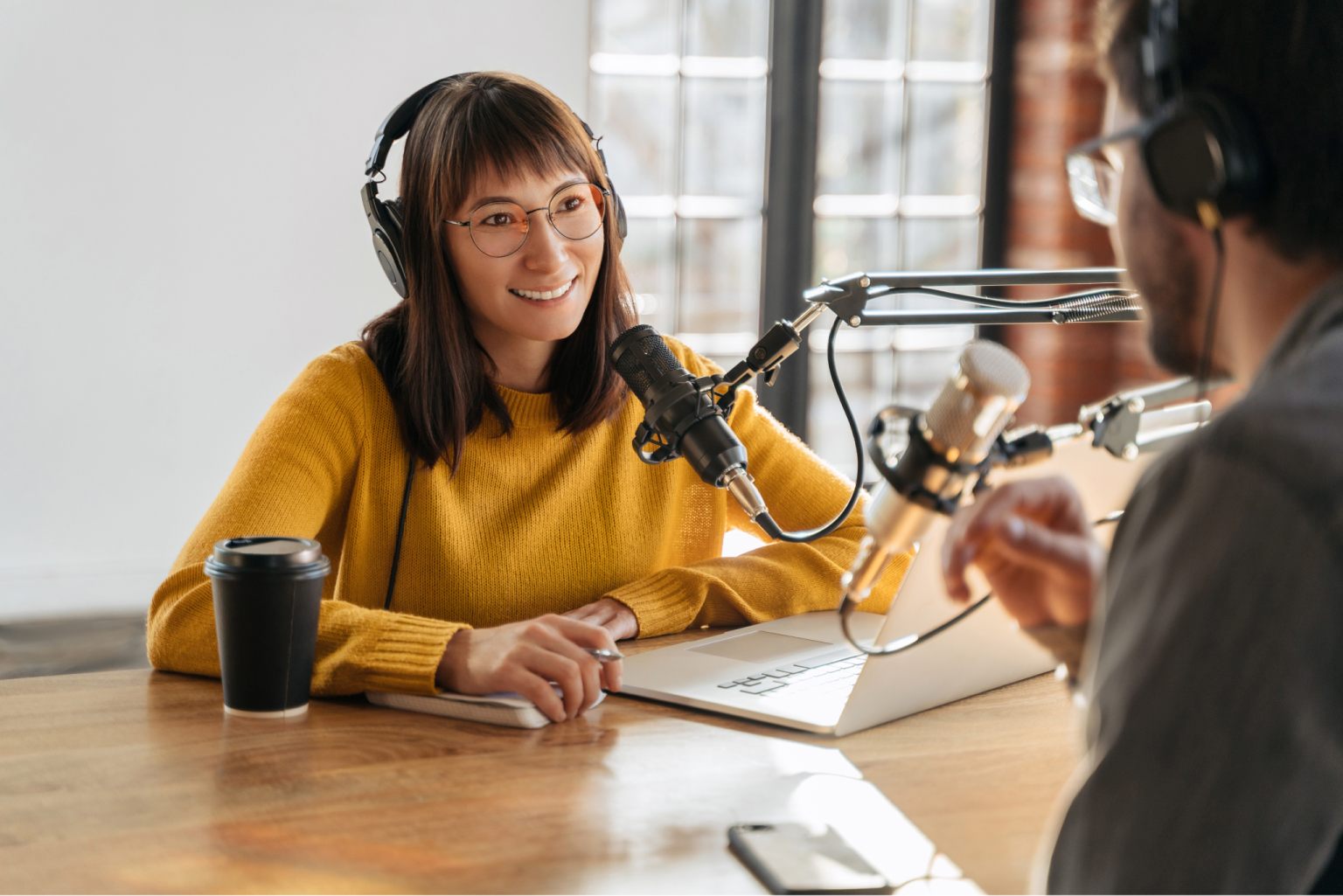
Boom or Microphone Arm
Podcast microphone arms are among the most basic podcast equipment, allowing you to readjust your microphone as needed. This way, you can quickly move the camera to change positions — like switching between sitting and standing during longer sessions. Nearly all brands of microphone arms work equally well, so long as they don't wobble.
Audio Interfaces for XLR Output
Audio interfaces let you adjust output and input levels as you record, significantly improving a podcat's sound quality, particularly for live recordings and podcasts with guests. So, if you have multiple microphones operating simultaneously, you can turn certain mics off until their speakers are ready.
You can also lower speakers' speaking levels and adjust the levels of other sounds, including background music. Rode consistently offers some of the best USB interfaces, including the RodeCaster Pro II.
Tools for Improved Audio Quality
Some of the best podcast equipment for beginners includes filters and panels to improve your recording space.
Reflection Filters
Reflection filters — like Neewer's isolation shield — serve as walls that usually surround at least half of the space around the microphone, also known as its polar patterns. They efficiently reduce the amount of ambient noise picked up by the microphone, including distant cars and voices echoing off walls. While not always necessary, these filters improve your audio quality, especially if your recording space is in a loud, high-traffic area.
Acoustic Treatment
Acoustic panels and other treatment options can help you soundproof rooms to avoid background noises and echo being picked up by your microphone. These panels should be placed strategically according to where sound waves may enter or bounce, such as directly across from the microphone and along shared walls. When your recording space is thoroughly equipped with acoustic treatment — like any Dekiru multipack — your audio quality should sound significantly more crisp.
Podcast Recording Software Options
Your starting podcast equipment should also include recording and editing software that maximizes your post-production process. Fortunately, there are many free options to choose from.
Digital Audio Workstations (DAWs)
Digital audio workstations (DAWs), software for recording and editing audio, have become necessary for many podcasters. While some DAWs comprise physical workstations, such as those in professional recording studios, many programs let you use the same features directly from your computer.
The best free DAWs include GarageBand and Audacity, which give you access to basic editing features like trimming, adjusting levels, and changing speeds. However, many podcasters with more complex audio needs prefer Pro Tools, which is generally considered the industry standard DAW.
Tools for Remote Guests
Particularly in this post-2020 era, most podcast guests tend to be remote. While remote interviews let you work with guests from around the world on almost any schedule, they can also be challenging to coordinate. As such, the tools you use for remote guests should be reliable and easy for them to understand.
Many podcasters use video conferencing tools like Zoom to talk to guests, especially since most people already know how to use them. Others utilize professional podcast software, such as Riverside and SquadCast.
Streamline Your Podcast With Royalty-Free Stock Music
Now that you know what equipment you need to start a podcast, you should consider other ways to improve your sound, including music and audio clips. At StockMusic.net, we offer an expansive variety of royalty-free tracks perfect for podcasts.
Browse our inventory today and learn how you can get unlimited access.

